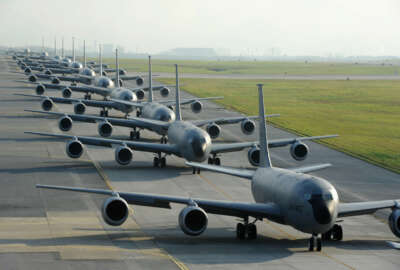The maintenance backlog for Army facilities has grown substantially in just a year’s time: compared to a tally of $7 billion worth of deferred-but-still-needed projects as of 2016, the figure has now ballooned to $10.8 billion, according to Army officials’ latest estimates.
As with the other military services, the Army’s facility sustainment, restoration and modernization accounts have been persistently underfunded for several consecutive years, creating a situation in which 22 percent of the Army’s buildings now meet the Defense Department’s criteria for “poor” or “failing” condition.
It’s not a problem that can be solved quickly. The Army testified Wednesday that it would take a decade of sustained funding toward fixing barracks, office buildings, airfields, training areas, roads and numerous other types of facilities to restore the failing ones to acceptable condition and prevent those in poor condition from degrading even further.
And it’s far from clear that the needed funding will materialize. For both the Pentagon and Congress, facility upkeep has been among the lowest spending priorities since the 2011 Budget Control Act set caps on Defense expenditures. And although the Trump administration has promised to boost the Pentagon’s overall budget, facility sustainment is just one function that’ll have to compete with others in the operations and maintenance (O&M) accounts that also pay for everything from combat training and ammunition to health care and civilian payroll.
Even within the small subset of O&M dollars that make up the Army’s facilities budget, most funds are going toward activities the Army deems most vital to current military operations, said Lt. Gen. Gwendolyn Bingham, the Army’s assistant chief of staff for installation management.
“Because of inadequate funding, right now, what we’re doing is prioritizing those infrastructures and services that directly correlate to readiness,” she told the House Armed Services Committee Wednesday. “We find ourselves looking at operations and training facilities, depot maintenance and production facilities, other types of facilities that directly impact readiness. That’s how we’re prioritizing.”
The Defense Department and Congress have jointly decided to defer facility maintenance for several consecutive years.
In its 2017 budget proposal, DoD acknowledged that the budget it requested would cover just 74 percent of its facility maintenance needs for the year, down from 81 percent the year before.
In the appropriations bill the House passed on Wednesday, five months into the fiscal year, lawmakers boosted the Pentagon’s $73 billion overall O&M request by an additional $1.9 billion, but those funds will be split between the military services to pay for their most pressing readiness concerns, including additional training and maintenance of military equipment.
Indeed, facilities are not the Army’s only problem. Gen. Daniel Allyn, the service’s vice chief of staff, testified a month ago that only three of the Army’s non-deployed brigade combat teams have enough people, training and equipment to be deployed into combat right away. As of Wednesday, only two BCTs were ready, in the Army’s estimation, to “fight tonight.”
“We can’t afford to cut back those training cycles, because we’ll be sending people off on these missions who aren’t prepared. So we have other bill payers,” said Lt. Gen. Joseph Anderson, the Army’s deputy chief of staff in charge of operations and training (G-3/5/7). “Installations and modernization have been bill payers to allow us to make sure we don’t repeat what happened back in 2013.”
In March of that year, the Budget Control Act forced a sudden sequestration of federal funds across every program, project and activity, causing civilian furloughs and drastic cutbacks in military training and maintenance. The Army still has not recovered from the readiness deficits those cuts caused.
Anderson said the service does not expect to achieve “full spectrum” readiness — the sort of capabilities it needs to deal with a wide range of threats beyond counterinsurgency warfare — until sometime between 2021 and 2023.
“The bottom line is that continuing funding at this level does not allow us to recover from the losses we have had since sequestration, the BCA, etc., in terms of end strength reductions, modernization, and installations,” he said. “Funding [at the BCA levels] does not allow us to buy back those capabilities in many cases. Some of our installations have been resourced at 50, 65 percent of requirements for these past three, going on four years, and we can’t play catch-up at these funding levels.”
Copyright
© 2024 Federal News Network. All rights reserved. This website is not intended for users located within the European Economic Area.
